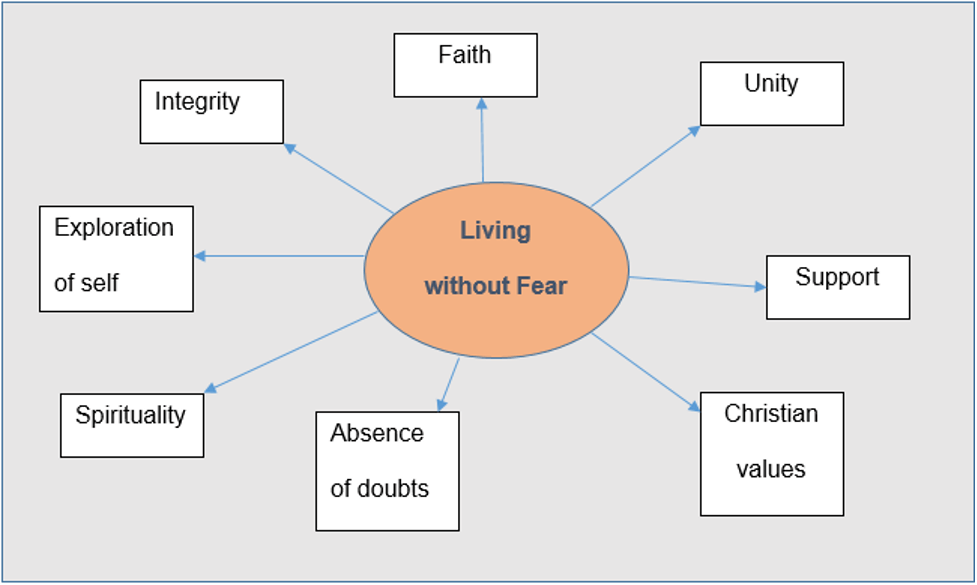In order to convey the importance of casting fears aside and standing for what one believes in, one should be able to connect the core concepts in a system of beliefs that provide the support for the main argument. To establish the principles outlined in the passage above, one will need to examine the nature of fear as it applies to the idea of Christianity and the related virtues, thus contextualizing the experience of being afraid. In the text in question, the idea of fear is represented as the phenomenon of self-doubt and the process of wavering between one’s convictions and the necessity to make a choice that contradicts the said values. Thus, where the Christian community would remain firm in its faith no matter how severe the consequences of failing to conform would be, those with lower levels of spirituality and the absence of faith that would serve as the source of support would ultimately yield and go against their convictions. The specified problem is represented in the chart below. As Figure 1 shows, the necessity to cast one’s fears aside and live without them is justified by the foundational tenets of the Christian faith.

As shown in Figure 1, the challenge of living without far is connected closely to the journey of personal discovery and the process of reconciling with oneself. Specifically, the absence of doubts as a critical component of fearless life needs to be rendered through the lens of Christian philosophy and practice. The specified state that reflects complete peace of mind represents the outcomes of reconciling with one’s internal struggles. Specifically, the ability to embrace the emotional side of spirituality and approach the Biblical constructs from the emotional standpoint is suggested as the path to self-discovery. Although the journey described above is expected to be quite challenging, the support of the Christian community and the focus on one’s integrity will allow one to reachne’s spiritual destination eventually.